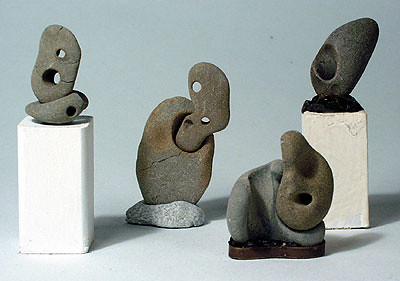Garden :: Natural Modernism
 A member of staff* pertinently noted that we already have a bonsai collection. Actually, to be precisely, it is a bonsai bonsai bonsai collection, consisting of three three-inch high bonsai. This miniature but perfectly formed collection forms one of the most valuable sections of the Zymoglphic Museum which was recently acquired by MoD. There will certainly be some kind of section of the bonsai forest reserved for them – particularly as I plan to emulate Emperor Q'in Shih Huang Ti’s scheme, with separate pedestals for each potted landscape. I plan to surpass his map of China schtick ‘though. I’m going to have them arranged to re-create The Memory Theater of Giulio Camillo.
A member of staff* pertinently noted that we already have a bonsai collection. Actually, to be precisely, it is a bonsai bonsai bonsai collection, consisting of three three-inch high bonsai. This miniature but perfectly formed collection forms one of the most valuable sections of the Zymoglphic Museum which was recently acquired by MoD. There will certainly be some kind of section of the bonsai forest reserved for them – particularly as I plan to emulate Emperor Q'in Shih Huang Ti’s scheme, with separate pedestals for each potted landscape. I plan to surpass his map of China schtick ‘though. I’m going to have them arranged to re-create The Memory Theater of Giulio Camillo.Maybe I’ll have a special pedestal bearing three miniature pedestals for the bonsai bonsai.
Miniature Tree Collection >>
But all this has reminded me of my plans to re-purpose another element of the collection.
‘Natural Modernism’ is a collection of stone assemblages, the components of each litho-morphic entity smoothed and shaped by water and time. I’m thinking that they’d look just wonderful distributed across the forecourt. Sure, they’re a bit under-scaled… so I was thinking of having them digitally duplicated to 100X their original size just like Saddam Hussein did with the Triumphal Arches in Bagdad.
Mr Stewart, our resident Zymoglphic Museum expert, has written something about the Natural Modernism collection. >>
 The only thing I’m still not quite sure what to do with, is the gongshi collection. It seems a little too baroque for the landscaping scheme I had in mind.
The only thing I’m still not quite sure what to do with, is the gongshi collection. It seems a little too baroque for the landscaping scheme I had in mind.“Also known as scholar's rocks, or gongshi, viewing stones are rocks of complex shapes that suggest worlds within worlds, microcosms in stone. They have been collected and displayed in China for centuries. The Zymoglyphic Museum's collection is made up of small seaworn objects which embody the spirit of gongshi. They are all less than three inches high, including the stands.
Gongshi >>
* Actually the former owner of the museum, who we have allowed to stay on to keep things nice.


0 Comments:
Post a Comment
<< Home